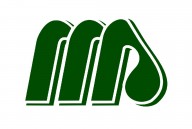Government Facilitating Organization (GFO) Model
The GFO concept is different from the nearly 10,000 Non-Governmental Organizations (NGO’s) operating in Haiti whose designated role is to temporarily fill gaps in government services with a concentration on humanitarian issues, developmental aid and sustainable development. While NGOs are intended to temporarily fill capacity gaps in government services, HR&DC is pioneering the GFO concept to function as a Government Facilitating Organization operating solely in the interest of the host country as a managerial apparatus that is sovereignty-centric, transparent, collaborative, and requires measurable results for NGOs. Its purpose is to allow vulnerable nations to systematically and responsibly re-assume leadership of their own country.
History

After years of examining the relationship between host countries, non-governmental organizations, international institutions and agencies, as well foreign governments that operate within their borders, Jim Lange, Founder and CEO of HR&DC, came to the realization that host nations remain vulnerable and easily exploited when they cede administrative control of their country to outside interests. One needs to look no further than the country of Haiti to see his conclusion incarnate.
Specific to non-governmental organizations (NGO's), there are three important features that have an enormous impact on host country outcomes; the what, when and the why.
Typically, non-governmental organizations (NGOs) operate independently from host governments, are not for-profit businesses and come from three major traditions – faith-based, humanitarian and philanthropic. Though NGO-type organizations have been around since the mid-1800’s, the phrase and enterprise model of today’s NGOs first entered into our lexicon and consciousness from within the halls of the United Nations circa 1945. Their designated role is to temporarily fill gaps in government services with a concentration on humanitarian issues, developmental aid and sustainable development.
While no right-minded person can dispute the tremendous good that most NGOs do in the world, (they save thousands of lives and improve the lives of millions more), it’s fair to question the unmitigated role of today’s NGOs – especially those operating in Haiti.
Since NGOs are intended to temporarily fill capacity gaps in government services, one would assume that Haiti’s gaps are being systematically evaluated, comprehensively addressed and universally solved. Unfortunately, the opposite appears to be true. Complicating matters further, the Government of Haiti is completely in the dark with regard to the number and/or scope of projects taking place within its borders, the agenda of the donors, and the amount of funding received by the participating NGOs. Therefore, they are unable to measure the actual benefit of services to the Haitian people. Examples of this aberration can be found in the healthcare sector, education and human services, just to name a few.
The purpose of the GFO is to begin to turn the tide and enable Haiti and other host governments to regain their sovereignty and place themselves on a path toward recovery and future economic self-sustainability.
Images from the Field
Government Facilitating Organization Concept - GFO
Dignity for the Dead, Hope and Opportunity for the Living
Project Goal and Objectives
Goal:
To operate solely in the interest of the host country as a managerial apparatus that is sovereignty-centric, transparent, collaborative, and requires measurable results for NGOs and other outside interests.Desired Outcome:
- Promote sovereignty
- Research and define census-based governmental requirements
- Define capacity gaps in government services and personnel
- Consult with government officials to define administration priorities
- Collaboratively draft capacity gap transition protocols
- Audit and analyze the impact of the NGOs presently in-country
- Perform worldwide audit of successful Nation State/ NGO activities
- Collaboratively draft NGO Certification Program
- Participate in a countrywide NGO Certification Program
- Collaboratively draft capacity gap-centric mandates for all certified NGOs
- Collaboratively communicate NGO-specific mandates and benchmarks
- Assist certified NGO’s in meeting specific mandates and benchmarks
- Audit “actual” vs. “mandated” results of government recognized NGOs
- Participate in punitive program for underperforming NGOs
- Continuously audit host country’s transition to self-reliance
Project Current Status
- Published an article on the GFO concept for examination by the world.
- Introduced the principles of the GFO concept to leaders within the Government of Haiti, NGO's and other outside interests.
- Received invitations by one of the largest NGO's to help their executive leadership understand and adapt their organization to the GFO concept.
- Prepared a proposal for presentation to the Government of Haiti to assist them with ongoing initiatives
- Received interest from numerous international experts and organizations regarding the GFO concept.
Project Next Steps
1. Receive Official Approval to Apply the GFO Concept
The first phase of the implementing the GFO comes with the identification of an area within a government, whether it be local, province, or national in nature.2. Perform an Current Capacity Assess
This phase of the GFO implementation is used to define all the stakeholders involved and how they each provide and build ongoing capacity for Haiti and the Haitian people. This is compared to the needs of the country and people to determine exactly where gaps exist to define requirements for solutions.3. Design Solution to Reach a Desired State
The goal of this phase is to evaluate potential solutions to the requirements defined in the previous phase and evaluate the variety of possibilities into a single focus on development.4. Solution Testing
The purpose of this phase will be to develop the detailed plans and test the solution designed in the previous phase. It is meant to determine the desired result on a small scale so that adjustments can be made before committing the large amounts of funds and resources prior to a full scale implementation.5. Implementation and Progress Monitoring
In this phase the full-scale implementation takes place. The plan tested and improved within the previous phase will then be monitored and evaluated during implementation. Implementation will include training, support and ongoing maintenance to assure that actual capacity building is achieved.6. Marketing Campaign
The purpose of this phase will be to promote the pioneering GFO concept by displaying the Government of Haiti's enhanced administrative skill and capacity building as an outcome.7. Evaluate and Closeout Project
The purpose of this phase is to verify that that the project sponsor (Government of Haiti) and stakeholders needs were achieved.8. On-Going GFO Support and Maintenance
The purpose of this final phase is to provide ongoing support and maintenance for the entity whose responsibility it is to manage and operate the capacity building solution. This is where governance and management systems created earlier are turned over to the project sponsor to sustain the solution.Recent Blog Posts
VIEW ALL - 15 January 2019 by Bob Linger, in Blog,Haitian National Memorial & Peace Park,HR&DC,Jim's Corner,Jim's Corner
15 January 2019 by Bob Linger, in Blog,Haitian National Memorial & Peace Park,HR&DC,Jim's Corner,Jim's CornerDignity, Healing is a Two Way Street. Jim Lange HRDC
Haiti Trip (January ‘19); Day Five: I have arrived at the Port au Prince airport...READ MORE + 14 January 2019 by Jim Lange, in Blog,Economic Development,Education,Jim's Corner,Jim's Corner,Job Creation
14 January 2019 by Jim Lange, in Blog,Economic Development,Education,Jim's Corner,Jim's Corner,Job CreationJim Lange works on Job Creation, Religion and Higher Education in Haiti
Haiti Trip (January ‘19); Day Four: Today, I turn my full attention to the livin...READ MORE + 13 January 2019 by Bob Linger, in 2010 Earthquake,Blog,HR&DC,Jim's Corner,Jim's Corner
13 January 2019 by Bob Linger, in 2010 Earthquake,Blog,HR&DC,Jim's Corner,Jim's CornerSunday in Haiti. Friendship, Simple Meal. Healing.
Haiti Trip (January ‘19); Day Three: It’s a beautiful Sunday in Haiti. The sun i...READ MORE +





